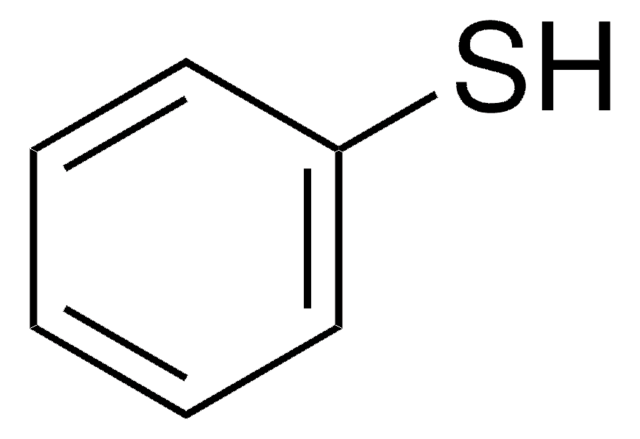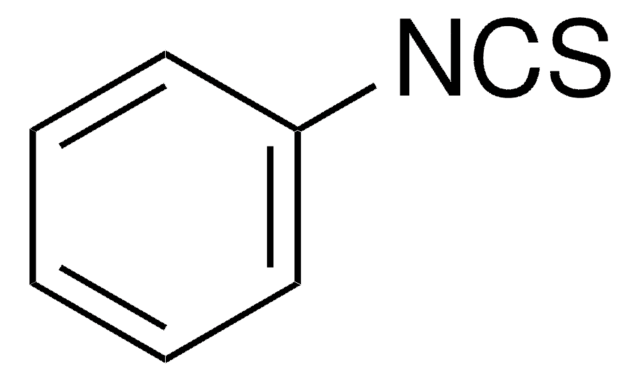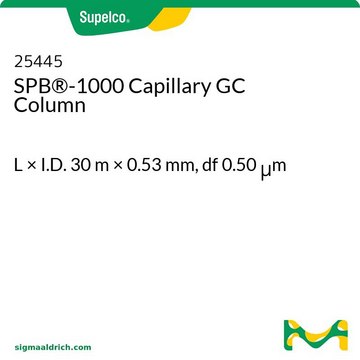Kluczowe dokumenty
24251
SPB®-624 Capillary GC Column
L × I.D. 60 m × 0.32 mm, df 1.80 μm
Synonim(y):
SPB-624, 60M .32MM 1.8UM
About This Item
Polecane produkty
Materiały
fused silica
Poziom jakości
agency
EPA 524.2,0030,624,8260,OLM04.2 VOA
meets requirements for USP G43
Parametry
≤25-250 °C temperature (isothermal or programmed)
Wartość beta
44
df
1.80 μm
metody
gas chromatography (GC): suitable
dł. × śr. wewn.
60 m × 0.32 mm
Zastosowanie
environmental
food and beverages
pharmaceutical
typ kolumny
capillary intermediate polar
Szukasz podobnych produktów? Odwiedź Przewodnik dotyczący porównywania produktów
Opis ogólny
USP Code: This column meets USP G43 requirements.
Phase:
- Bonded
- Proprietary
- ≤0.32 mm I.D.: Subambient to 250 °C (isothermal or programmed)
- ≥0.53 mm I.D.: Subambient to 230 °C (isothermal or programmed)
Zastosowanie
Inne uwagi
Informacje prawne
Kod klasy składowania
13 - Non Combustible Solids
Klasa zagrożenia wodnego (WGK)
nwg
Temperatura zapłonu (°F)
Not applicable
Temperatura zapłonu (°C)
Not applicable
Wybierz jedną z najnowszych wersji:
Masz już ten produkt?
Dokumenty związane z niedawno zakupionymi produktami zostały zamieszczone w Bibliotece dokumentów.
Nasz zespół naukowców ma doświadczenie we wszystkich obszarach badań, w tym w naukach przyrodniczych, materiałoznawstwie, syntezie chemicznej, chromatografii, analityce i wielu innych dziedzinach.
Skontaktuj się z zespołem ds. pomocy technicznej






